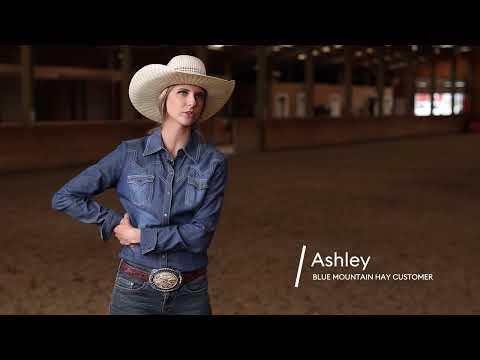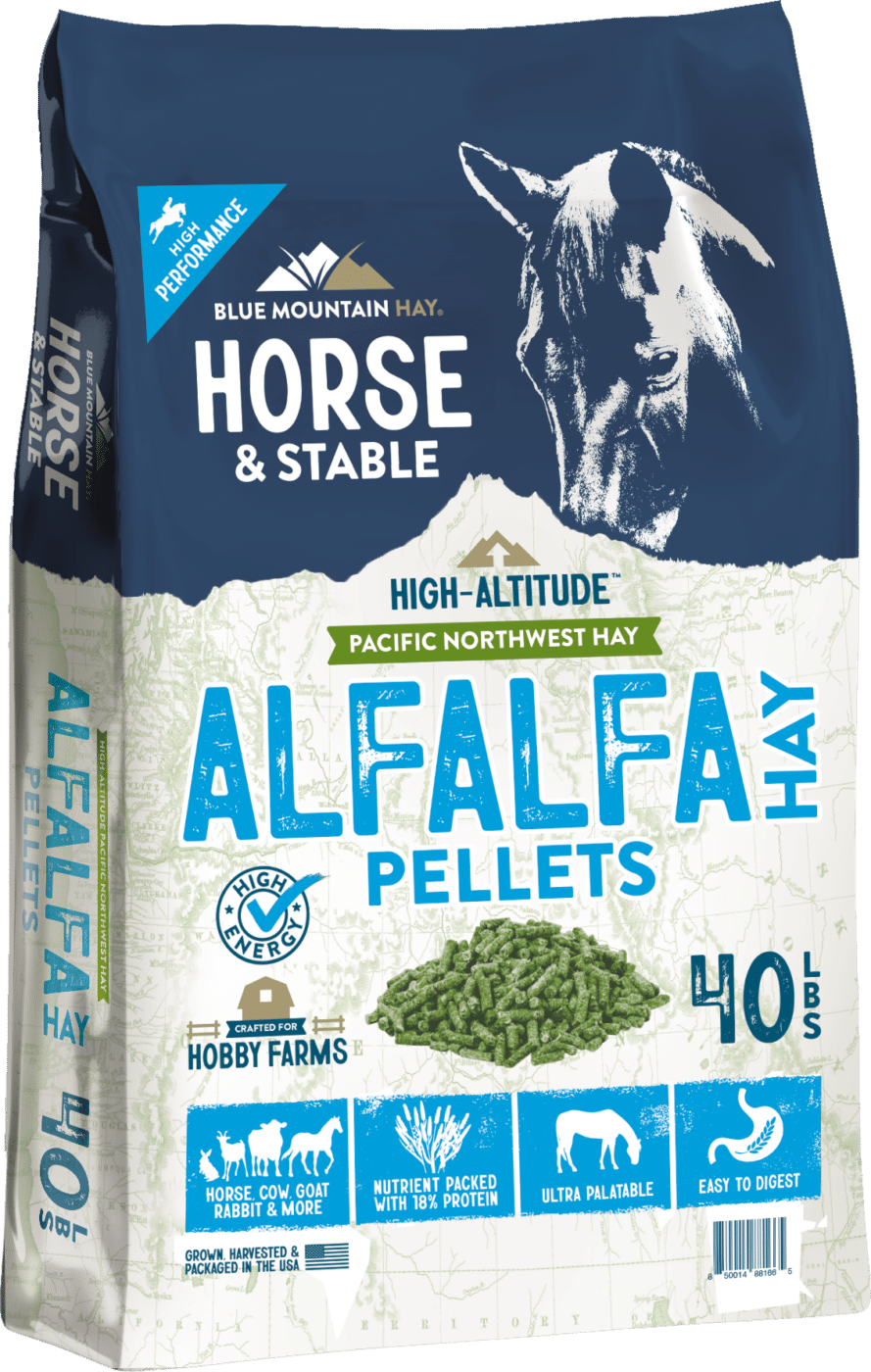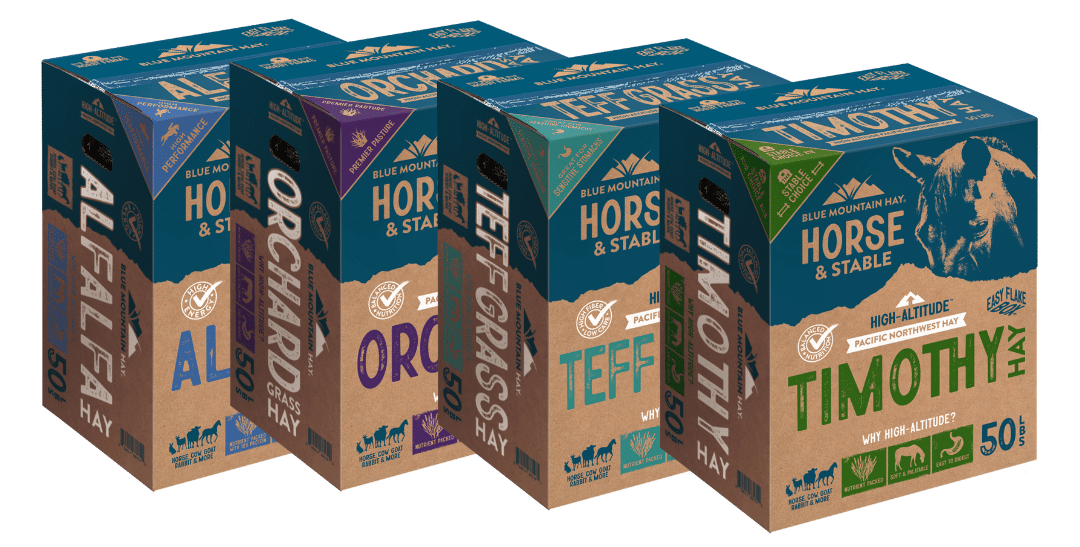
High Altitude Hay Pellets
Benefits of Pellets vs Cubes
1
Consistent Nutrients
Pellets provide a uniform mix of nutrients in every bite, ensuring consistent nutrient intake.
2
Reduced Chewing Time
Pellets are ideal for older horses because they require less chewing and are easier to digest than cubes.
3
Lower Choking Risk
Smaller, quicker-soaking pellets reduce the risk of choking compared to larger cubes.
4
Contains Less Dust
Pellets typically contain less dust, reducing respiratory issues in sensitive horses.
5
Ease of Handling
Pellets are easy to measure, great for automatic feeders, and mix well with other feeds.
6
Versatile Use
Pellets can be easily combined with other feed types and supplements for variety in your horses’ diet.
Transitioning Horses from Cubes to Pellets
- Start Slow– Introduce pellets gradually, beginning with a small percentage mixed with the cubes (e.g., 10% pellets, 90% cubes).
- Increase Gradually– Slowly increase the pellet ratio over several weeks while decreasing the cubes. Monitor the horse for any digestive or behavioral changes.
- Monitor Health: Watch for signs of colic, choking, or other health issues throughout the transition.
- Complete the Transition: Adjust based on the horse’s response, aiming to fully transition to pellets in about 4 to 6 weeks.
- Ongoing Monitoring: Continue to monitor your horse’s health and dietary balance even after the transition is complete.

High altitude = High performance. Cooler. Higher altitude nights produce slow-growth hay that’s packed with nutrients, softer, and less stemmy, making it more palatable and easier to digest. It’s hay candy!

We’re a family-owned farming company with trusted relationships with neighboring family farms, including many century farms- that call the Pacific Northwest their home, ensuring the tradition of American small farms continues to flourish.

Get top-notch hay delivered straight to your doorstep – fast, easy, and dependable. Just place your order, and we’ll bring you fresh, nutrient-packed hay, saving you valuable time and hassle. Count on us to rescue you whenever hay is on the menu!
Horse Products Sold In-Store
High-quality hay directly affects your horse’s performance. Blue Mountain Hay invests a lot of time harvesting clean hay for your horses. Grown at cooler nighttime temperatures in the mountains, our family-owned business delivers easy hay and other horse products directly to your farm. See all horse products now! Contact us to find a Blue Mountain Hay dealer near you!

Horse Feeding
Pellets offer a convenient and easily measured feed, promoting overall digestive health for your animals. To enhance hydration or accommodate aggressive eaters and horses with dental issues, it’s advised to feed pellets wet-soaked in water (2 parts water to 1 part pellets) until properly softened, typically 30 minutes. Pelleted forage should not be the only source for horses. Incorporating Blue Mountain Timothy, Teff, Orchard, Oat, and other hay varieties can prevent boredom and stable vices.
We also offer a variety of Easy Flake Hay Boxes for your horse as well!
Feeding Recommendations
| Horses and Cattle | 70-90% of their diet should be hay | feed 2% of their body weight a day |
| Sheep and Goats | 70-90% of their diet should be hay | feed 4% of their body weight a day |
| Small Pets | 5-10% of their diet should be hay | feed a small amount every day |
Storage and Handling
Proper storage can extend shelf life to a year or more. Store forages in covered, cool, well-ventilated conditions away from the effects of weather.
Related Horse Products:
“I have nice, clean hay that I’m feeding to my horses.”
Rachel
Blue Mountain Hay Customer












